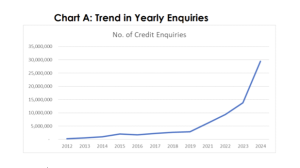
Leadership encompasses a variety of theories that attempt to understand how a leader can influence their people to collectively achieve organization goals. The literature on leadership theory has espoused different approaches to dealing with peculiar situations or challenges. Nonetheless, it is widely acknowledged that there is no perfect leadership style every circumstance. That said, a leadership style should be more responsive to uncertainty. The Volatility, Uncertainty, Complexity and Ambiguity (VUCA) of today’s global world has given rise to what is called agile leadership.
Agile leadership is an approach that requires skills to effectively facilitate adaptation, support collaboration and enable fast and flexible decisions to ensure organizational development. In an agile organization, a leader focuses less on controlling every aspect of the organization and more on creating an environment where teams can self-organize and respond dynamically to change. Agile leadership helps business leaders to drive innovation.
Key Principles of Agile Leadership
Agile leadership is based on several core principles and practices that distinguish it from traditional leadership models. These include:
Flexibility and Adaptability: Agile leaders recognise that adhering to rigid structures and inflexible plans can significantly hinder progress, especially in environments characterised by constant change and uncertainty. Instead of clinging to outdated methodologies, a business leader must foster a culture that not only accepts change but also actively encourages it. Agile leaders must inspire their teams to remain open-minded and responsive, urge them to adjust their strategies based on new insights, feedback and emerging trends. This approach enhances creativity and problem-solving capabilities while positioning the organization to seize new opportunities as they arise.
Decentralised Decision Making: An agile leadership fosters an environment where teams can make decisions independently and tackle real-time challenges without the delays that often accompany senior management approval. When team members are empowered to act, they can respond swiftly to changes in the market, customer feedback, or internal challenges. Agile leaders must grant autonomy, cultivate a sense of value and encourage proactive contributions from the staff. Teams can iterate on their projects, implement changes, and refine their strategies in real-time, improve outcomes and overall effectiveness.
Customer-centricity: In an agile framework, delivering value to customers is paramount. An agile business leaders encourage their teams to embrace a mindset of continuous improvement which enables them to refine offerings based on real-time feedback. As a result, products and services developed under agile leadership are more likely to align closely with customer needs and expectations. Agile leaders must ensure open communication within teams while aligning everyone with the corporate strategy. Regular check-ins, feedback sessions, and collaborative planning meetings help cultivates an atmosphere of transparency and trust. This culture of learning and adaptation fosters innovation, as teams constantly seek new ways to solve problems and deliver exceptional customer value.
Continuous Learning and Improvement: Cultivating a culture of continuous improvement is key to sustaining business agility. This involves regularly reflecting on internal processes, identifying areas for improvement and implementing changes to enhance team performance. In an agile environment, every experience is viewed as a valuable learning opportunity. This mindset shifts the focus from merely achieving results to understanding the processes that lead to those results, thereby creating a more resilient and adaptable workforce. An organization that embraces agile leadership and continuous improvement is better equipped to respond to emerging trends and evolving customer preferences.
Collaboration and Empowerment: Empowerment encourages individuals to take initiative, learn from their experiences and foster a culture that values innovation and adaptability. Agile leadership drives collective objectives while nurturing a culture of continuous improvement and ensuring that the organization remains competitive and responsive to challenges.
Case Study of Agile Leadership
Spotify
Spotify’s agile approach to leadership and product development has been widely studied and applied. The company uses a model of “squads,” “tribes,” “chapters,” and “guilds” to organise its teams in a flexible, scalable way. This structure allows for rapid innovation and adaptation which helped Spotify to remain a leader in the highly competitive music streaming industry.
ING Bank
The Dutch banking group, ING underwent a major transformation to adopt agile practices across its organisation. Comprising about 350 nine-person “squads” in 13 so-called “tribes” or cross-functional teams, the bank implemented agile methodologies that increased its employee engagement, improved time to market and enhanced its ability to respond to customer needs.
Agile Transformation Project for a Large Financial Services Firm
Background: A large financial services firm operating in a rapidly evolving and competitive environment has deployed agile approaches inconsistently in its operations. The organization has been facing challenges in coordinating and prioritizing resources, leading to frequent shifts in team structures and delays in project deliveries. This disjointed implementation has resulted in higher operational costs and an unstable work environment.
Solution: The comprehensive agile transformation led to a 25% increase in productivity, a 30% reduction in time-to-market, and a 15% decrease in operational costs, highlighting the importance of leadership alignment and integration of agile practices for improved organizational performance.
From Chaos to Collaboration: Scaling Agile at Salesforce
Nearly two decades ago, Salesforce was not the SaaS giant it is today. An agile transformation helped to point the company towards its current position of more than $34 billion in annual revenue.
The Solution? A Culture Transformation
In 2006, their number of major releases had dwindled down to zero. By the first quarter of 2007, they delivered their Spring release, and for six more years, it never missed another seasonal release target even as it scaled.
Agile Transformation in Maritime Logistics
Background: A global player in the maritime logistics sector, struggled to keep up with rapidly changing market demands and technological advances. With a traditionally hierarchical and siloed structure, the company has found it challenging to adapt to agile methodologies. The need for increase operational flexibility and reduce time to market for new services became critical to maintain competitiveness. The organization’s current processes are rigid and slow, leading to missed opportunities and diminished customer satisfaction.
Solution: A phased agile transformation led to a 40% increase in speed to market and a 25% improvement in customer satisfaction, highlighting the importance of operational excellence and cultural change in achieving business goals.
Agile Strategy for a Textiles Manufacturer
Background: A mid-size textiles manufacturer faced significant hurdles in operational efficiency and market responsiveness. Internally, it experienced prompting the adoption of an agile strategy framework. Internally, the organization experienced a 25% decline in production output and a 20% increase in project delivery times due to rigid processes and poor cross-functional collaboration. Externally, the company struggled to adapt to changing market demands and lost 15% loss in market share to more agile competitors. The primary objective was to implement an agile strategy framework to enhance flexibility, speed, and efficiency in operations.
Agile Implementation Challenges & Considerations
Transforming to agile in a traditionally structured organization raises several questions from executive teams about integration with existing processes, cultural impact, and how to measure success. Changing an organization’s culture to support agile practices is a significant undertaking that requires a clear vision, strong leadership, and persistent communication. It is a journey that fundamentally changes how teams work and collaborate. Measuring the success of agile transformation can be challenging. It is essential to define clear metrics aligned with the transformational goals, such as increased speed to market, higher product quality, and improved customer satisfaction.
Conclusion
Agile leadership has emerged as a critical response to today’s global markets. However, the transition to agile is not without challenges. Many organizations, especially those with traditional, hierarchical structures, struggle with integrating agile practices into their existing systems. Cultural inertia, lack of leadership alignment, and undefined success metrics often stall or derail transformations. Ultimately, agile leadership is not a fixed model but a mindset one that prioritises learning, embraces change and empowers teams to deliver value continuously. For organizations navigating dynamic markets, embracing this approach is not just advantageous, it is essential for long-term relevance and success.
References:
https://www.agileleadershipjourney.com/case-studies
https://mark-bridges.medium.com/12-case-studies-exploring-agile-transformation-8025311724de
BERNARD BEMPONG
Bernard is a Chartered Accountant with over 14 years of professional and industry experience in Financial Services Sector and Management Consultancy. He is the Managing Partner of J.S Morlu (Ghana) an international consulting firm providing Accounting, Tax, Auditing, IT Solutions and Business Advisory Services to both private businesses and government.
Our Office is located at Lagos Avenue, East Legon, Accra.
Contact: 233 302 528 977
233 244 566 092
Website: www.jsmorlu.com.gh
The post Agile leadership, navigating dynamic markets appeared first on The Business & Financial Times.
Read Full Story














Facebook
Twitter
Pinterest
Instagram
Google+
YouTube
LinkedIn
RSS